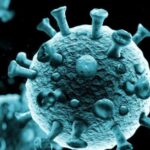
How did life begin? Did the chemistry of the Universe organize in interstellar dust and gas clouds before reaching Earth, or did it happen here and possibly on planetary bodies elsewhere? Were conditions for life’s emergence from simple organic molecules an inevitable consequence in the evolutionary chain that began with the Big Bang, leading to the formation of stars as factories producing the natural chemical elements we see in the Periodic Table?
What is clear is that the building blocks for life, including water, carbon molecules, and other chemistry, were present within a few million years after the planet formed.
The common theory for life’s origins is called abiogenesis. It states that simple organic molecules, through natural chemical interaction in the presence of one or more energy sources, provided the spark.
At University College London (UCL), scientists recently conducted an experiment attaching amino acids, which form proteins, to RNA, the single-strand cousin of DNA. Amino acids don’t have the capacity to make copies. RNA, however, can facilitate this, and with this experiment, which included a likely present chemical energy source found on the early Earth, the researchers created a protein factory assembly line.
One of the researchers is Matthew Powner, a professor of chemistry at UCL. He believes the UCL research shows how RNA could facilitate “the first part of that complex process” of protein synthesis. Using simple chemistry, in the presence of water with a neutral pH, Powner describes the result as a chemistry that “is spontaneous, selective, and could have occurred on the early Earth,” nearly 4 billion years ago.
Past experimental attempts to mate RNA with amino acids failed to work. The UCL researchers took inspiration from biology, employing what they described as a gentler approach, employing a thioester, “a high-energy chemical compound important in many of life’s biochemical processes.”
Thioesters in human biochemistry are used in cells for energy storage and during the metabolism of carbohydrates, lipids and proteins. Acetyl-CoA is a thioester functioning as the central hub in cellular metabolic processes. Thioesters also interact with proteins to help regulate cellular function. They are highly reactive and efficient in the synthesis of fatty acids, steroids and other biomolecules. They release energy, making them a likely candidate to produce the spark needed for the emergence of life.
Powner describes the UCL study as uniting “two prominent origins of life theories, the RNA world, where self-replicating RNA is proposed to be fundamental, and the thioester world, in which thioesters are seen as the energy source for the earliest forms of life.” On the early Earth, the thioesters and amino acids would have reacted with a sulphur-bearing compound called patetheine, which previous UCL research shows could have been present.
Although the study doesn’t quite get us to life’s emergence, it does take us closer to that moment, showing how chains of amino acids, essential for life, would have been given the means to replicate, eventually leading to DNA.
Solving The Mystery Of How Single Cells Beget Multicellular Life
For the Earth’s first three billion years of existence, life consisted of single-cell organisms. The fossil record shows stromatolites, mats of photosynthetic cyanobacteria, dating back as early as 3.7 billion years ago in Greenland and 3.48 billion years ago in Western Australia. These represent the oldest evidence of microbial life on Earth and exist as living fossils today, appearing not to have changed from their ancestors. We know these fossils do not represent multicellular life because our analysis of modern stromatolites shows that the DNA and molecular structures of individual cells are consistent with individual autonomy.
The fossil record, however, provides evidence of multicellularity (orthogenesis) occurring at least 20 times between 1.5 and 2 billion years ago, according to a paper published in Biological Reviews in July 2023. Multicellular structures have been identified in early fungi and parasitic microorganisms such as Oxymonada or Parabasalia found in the gut of termites, cockroaches and even humans.
So, how did multicellularity come about? Multicellularity requires different types of cells to adhere to one another, exchange biomolecular signals, and coordinate gene expression to produce common replicable outcomes. Scientists believe that the properties of multicellularity had to appear in single-cell organisms before multicellular species emerged. Some believe that the frequency of retries points to this.
Two research teams, one at the University of California-Berkeley, California (UC-Berkeley), and the other at the Institute of Evolutionary Biology in Barcelona, Spain, have modelled the evolutionary steps of eukaryotes, life based on cells with nuclei. That includes everything from amoebae and paramecia to corals, jellyfish, fungi and moulds, plants, insects, spiders, amphibians, reptiles, birds, mammals and us.
When examining single-cell eukaryotes, such as amoebae, we can observe social characteristics that activate in response to environmental stress. Social amoebae will form colonies and appear to coordinate their activities as if they were a single multicellular species. In 2002, it was discovered that C. owczarzaki, an amoeba found in freshwater snails, can go multicellular by forming clusters of individual amoebae. These are single-celled animals that coalesce to become a superset of themselves, working in coordinated fashion.
Another example of multicellular expression happens with a single-celled choanoflagellate (single-celled organisms characterized by having a long tail or flagellum) called Salpingoeca rosetta. In the presence of a prey bacterium, it divides into daughter cells to form a singular multicellular colony shaped like a rosette (hence the name). In its centre, this multicellular creature hosts several distinct free-living cell types.
Both of these behaviours are different types of demonstrations of the path that led to the emergence of multicellular life from 600 million years ago. One wonders how many other natural experiments to create multicellularity failed along the way and how many we will eventually yield from the fossil record.








